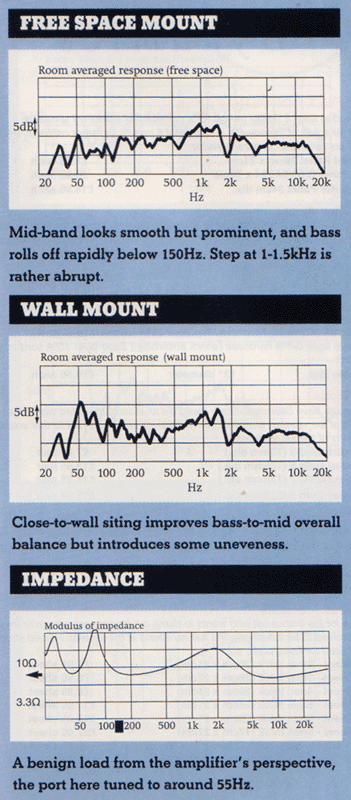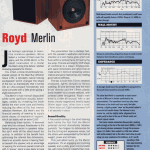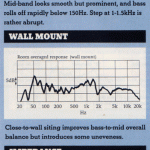Reproduced from Hi-Fi Choice, November 1995
Royd Merlin
Joe Akroyd specialises in seven litre miniature speakers. We’ve tested a number of them over the years, and the £298 Merlin is the latest incarnation of a model founded a long time before I started reviewing speakers for Choice.
It is, in fact, a more conventionally box-shaped version of the Best Buy Minstrel (issue 135), a decidedly radical looking loudspeaker which changed the shape of the box so dramatically that it turned into an ultra-compact floorstander, and came complete with a little plinth giving a slight backward tilt.
The Merlin’s more ‘normal’ shape does confer some significant acoustic advantages, notably by increasing the depth behind the main driver cone and thereby reducing the effect of the first internal reflection there from. But there’s also the financial penalty of needing to supply some means of mechanical support, which can easily add an extra £100.
Balancing these factors, it becomes clear why the compact floorstander is the fastest growing sector in speakers today. But don’t write off the stand-mount too quickly. In addition to the benefit from optimising the internal box dimensions, there’s an acoustic bonus in leaving fresh air beneath the speaker, and an advantage in keeping the enclosure panels small and stiff. A ‘proper’ stand is also likely to have a larger stability footprint and better spike fixing, and gives you the opportunity to experiment with different types (and fills).
The £298 price tag is a bit on the high side for a miniature, so it’s only right to expect some luxury touches. Our examples were beautifully finished on five of the six faces in an attractively figured and pair matched ‘classic’ walnut veneer, which should earn some domestic brownie points and has got to be worth a few bob.
The presentation has a nostalgic feel, with the speaker’s aesthetics demanding retention of a slim frame grille which sits flush within a picture frame formed by the box wrap. The size and slightly bluff shape all contribute to a classic timelessness, with panel dimensions and ratios that all make sense in terms of spreading various internal and panel resonances and creating good natural stiffness.
The box is built from 15mm veneered chipboard, lightly damped by fibrous wadding. Bi-wire terminals feed the main driver directly and the 19mm plastic dome tweeter via a simple network, with soldered joints throughout. Royd’s main driver is a little bit unusual, with a cast frame, chunky magnet and heavily doped 90mm paper cone, driven from a small 19mm voice coil. Eight woodscrews hold it all securely in place.Sound Quality
A fine overall ranking in the blind listening tests belies the fact that the Merlin polarised opinion dramatically between panellists. Two forgave its deficiencies for the fine timing and expressive voices, but the others were exasperated by the lack of weight, power and richness.
This just about sums up the Merlin experience. It’s an engaging and involving speaker, and a pretty good communicator too, with more rhythmic integrity than most. Nonetheless, it’s a small speaker that sounds small . It lacks authority and warmth, and there is an unwelcome thinness which is potentially fatiguing.
Conclusion
Effectively re-packaging the Minstrel in a more traditional form, the Merlin performs equally well but is obviously a less cost effective package once the extra outlay for stands is taken into account.Lab Report
The claim the Merlin is essentially a stand-mount version of Minstrel is further confirmed by the measurements. The impedance trace has only minor differences at the treble and bass end, the latter showing a slightly great ‘skew’ on the ported system’s characteristic double hump. The balance is very similar too, and the slightly better alignment here could partly be due to the use of 24inch (wall) and 19inch (space) stands.
The traces remain somewhat idiosyncratic, peaking quite strongly at the top of the mid-band (800Hz-1.7kHz) and showing quite obvious unevenness through the presence region (1.5-5kHz). Bass output is a little lean without wall reinforcement, but on the other hand close-to-wall siting can over-emphasise the midbass, so it’s worth spending a little time experimenting between the two extremes.
Sensitivity is a lowish 85dB, but the load is an easy-to-drive 8+Ohms affair and bass extension (-6dB on our 33Hz room mode) is not bad for such a small box.
Reprinted from “Hi-Fi Choice” November 1995
 Royd Merlin
Royd Merlin


